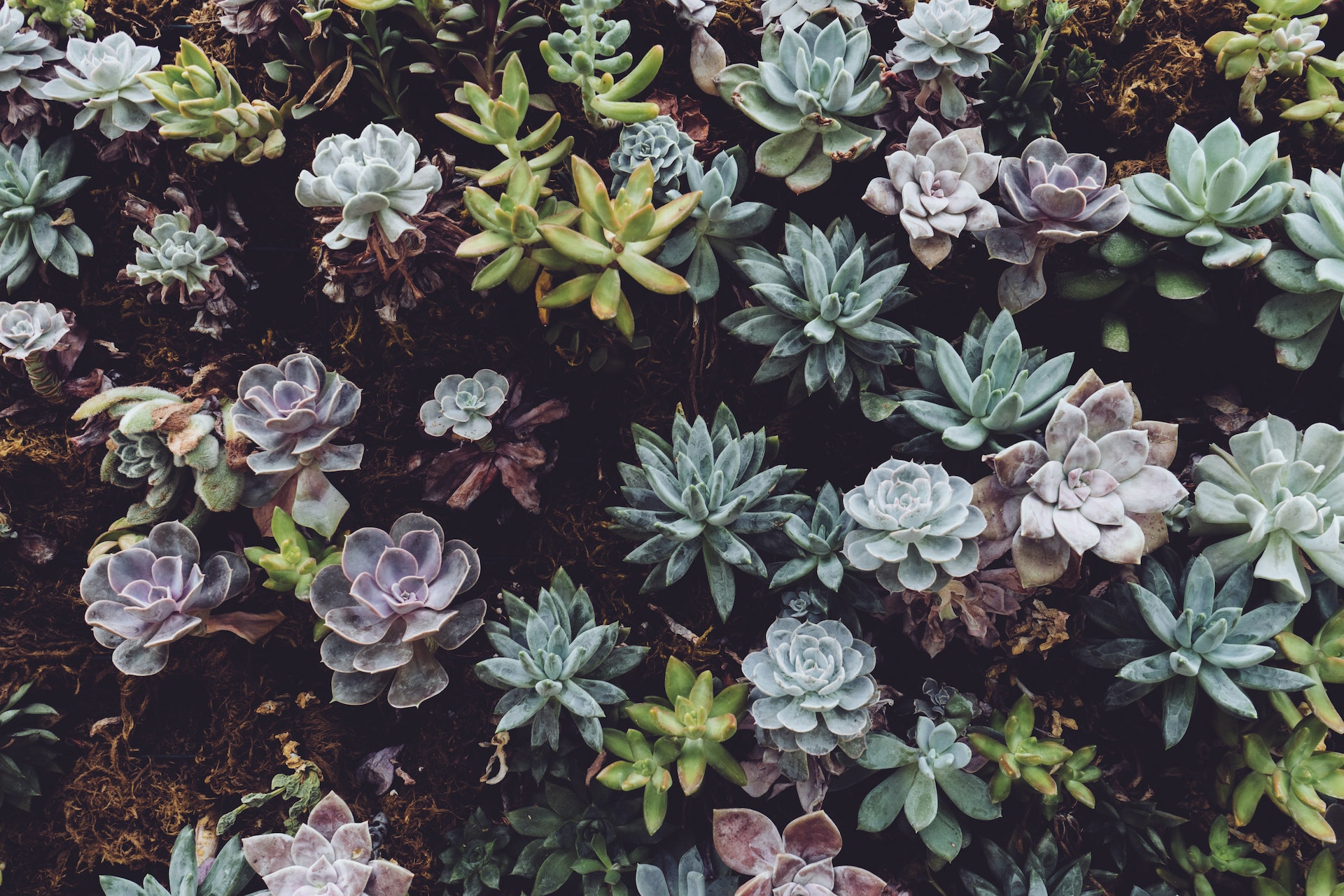Welcome to the intriguing world of succulents, a group of plants known for their resilience, versatility, and sheer beauty. These plants, admired for their unique forms and vibrant colors, have captivated the hearts of plant enthusiasts around the globe. However, understanding succulent care, especially when it comes to watering, is crucial to maintaining their health and vitality.
Succulents have a different watering schedule compared to most other plants. Knowing when and how often to water them is not just a matter of routine; it’s the key to unlocking their potential. By following a precise watering schedule, you can help your succulents thrive, promoting robust growth and preventing common issues like overwatering or underwatering. This article will delve into the particulars of succulent care, guiding you on a journey of discovery about their unique water needs and how to meet them effectively.
Throughout this comprehensive guide, we’ll draw on scientific insights and expert advice, ensuring the information is not only accurate but also practical. We’ve tailored this article to be mobile-friendly, so you can refer to it wherever you are. Our focus is on providing valuable, reader-centric information, helping you understand and apply these insights to your own succulent care routine. Let’s dive in and uncover the secrets to successful succulent watering.
Signs of Underwatering and Overwatering Succulents
A key aspect of succulent care is learning how to interpret the signs your plant sends. Succulents are remarkably communicative; they indicate their health status through visible cues. This section will help you distinguish between an underwatered and an overwatered succulent, empowering you to respond effectively and preserve your plant’s health.
Underwatered succulents typically exhibit symptoms like shriveled, wilted leaves, dry soil, and slowed growth. If your succulent’s leaves are puckering or appearing thinner than usual, it might be signaling a need for more water. It’s important to remember that succulents are designed to withstand dry conditions, but a prolonged lack of water can still harm them.
Conversely, overwatering is one of the most common mistakes in succulent care. The signs of an overwatered succulent can include mushy, discolored leaves, a soft or rotting stem, and a general appearance of wilting despite moist soil. Overwatering can lead to root rot, a dangerous condition that can quickly lead to the death of your plant if not addressed.
Identifying these signs early is essential to prevent irreversible damage to your succulents. By paying close attention to your plant’s appearance and behavior, you can modify your watering schedule as needed, ensuring your succulent stays vibrant and healthy. Remember, it’s not just about the quantity of water you provide, but the timing and conditions under which you water your succulents. We’ll explore this in more detail in the following sections.
Factors that Affect Succulent Watering Needs
Just like humans, succulents’ watering needs are influenced by a range of factors. These can include the climate in which they are grown, the composition of their soil, and even the size of the plant itself. Understanding these factors can help you fine-tune your watering practices, ensuring your succulent gets just the right amount of hydration it needs to flourish.
Climate plays a significant role in determining your succulent’s watering needs. In hotter, drier climates, succulents may need more frequent watering, while in cooler, humid climates, watering should be less frequent. Succulents grown indoors may also have different water needs than those grown outdoors, due to variations in temperature and humidity.
The soil composition also significantly affects how often and how much you should water your succulents. Succulents prefer well-draining soil, which allows water to run through quickly, preventing root rot. If your soil retains water for longer periods, you may need to water less frequently. Conversely, if your soil drains very quickly, your succulents may need watering more often.
Finally, the size of your succulent also matters. Larger, more mature succulents can typically store more water in their leaves and stems and may need less frequent watering than smaller, younger plants.
Adjusting your watering schedule based on these factors can help keep your succulents healthy and vibrant. In the next section, we will dive deeper into the best practices for watering succulents effectively.
How to Water Succulents Properly
Now that you understand the signs of underwatering and overwatering, as well as the factors that influence your succulent’s watering needs, let’s delve into the proper techniques for watering these unique plants. The right approach can make a significant difference in your succulent’s health and growth.
There are different ways to water succulents, but a commonly recommended method is watering from the top. This technique involves pouring water onto the soil until it runs out of the drainage holes in the bottom of the pot. This ensures that the roots, which draw up the water, receive adequate hydration. However, be sure to let the soil dry out completely before the next watering to prevent overwatering.
Another method is water propagation, which involves placing the succulent in a shallow tray of water and allowing the roots to absorb moisture from the bottom up. This method is particularly useful for succulents that are being propagated or those recovering from underwatering.
One of the most important elements in succulent care is using well-draining soil and pots with drainage holes. Succulents do not like to sit in waterlogged soil, as this can lead to root rot. A well-draining soil mix and a pot with good drainage can prevent water from accumulating and help maintain the right moisture balance.
When watering your succulents, the goal is to mimic the natural environment where these plants thrive. Remember, it’s not about keeping the soil wet all the time but allowing periods of dryness that succulents are accustomed to in their native habitats.
In the next section, we’ll discuss how to create a consistent watering schedule for your succulents, taking into account all the factors we’ve discussed so far.
Creating A Watering Schedule for Succulents
Creating a consistent watering schedule for your succulents is vital for their health and well-being. A well-planned schedule considers your succulent’s specific needs, accounting for factors such as species, size, and climate, among others.
The first step is understanding your specific succulent species. Different species have varying watering needs, and it’s essential to research and understand the requirements of your specific plants. Some may need more frequent watering, while others can go longer periods between watering sessions.
Next, consider the size and maturity of your succulent. As mentioned earlier, larger and mature succulents can usually store more water and may require less frequent watering. On the other hand, smaller or younger succulents might need more regular hydration.
Lastly, consider your local climate and the season. Succulents typically require more water during their growing season (usually spring and summer) and less during their dormant period (typically fall and winter). The local weather conditions can also affect how quickly the soil dries out and how often watering is needed.
With these factors in mind, you can create a tailored watering schedule that promotes the optimal health and growth of your succulents. Remember, the goal is not to adhere rigidly to a fixed timetable but to develop an understanding of your succulents’ needs and adjust your watering practices accordingly.
Maintaining a proper watering schedule can provide numerous benefits. Not only does it help keep your succulents vibrant and healthy, but it also prevents common issues such as overwatering and underwatering. In our final section, we’ll summarize the main points discussed in this blog post and reiterate the importance of understanding when and how often to water your succulents.
Conclusion
Navigating the world of succulent care can seem complex, but with a deeper understanding of their unique needs, you can cultivate a thriving garden of these resilient plants. Key to this is recognizing the signs of underwatering and overwatering, understanding the factors that influence your succulent’s watering needs, and implementing the correct watering techniques.
We’ve explored the unique anatomy of succulents and how it impacts their water intake, distinguishing them from other plants. We’ve also discussed the signs of underwatering and overwatering, emphasizing the importance of early detection to prevent damage to your plants.
Furthermore, we’ve delved into the various factors that affect succulent watering needs, including climate, soil composition, and plant size. We’ve discussed the different methods of watering succulents and the importance of using well-draining soil and pots with drainage holes.
Finally, we’ve highlighted the importance of creating a tailored watering schedule for your succulents, considering factors such as species, size, and local climate.
The journey of succulent care is a fulfilling one, filled with learning and growth, both for you and your plants. Remember, understanding when and how often to water your succulents is fundamental to their health and vitality. With this knowledge at your fingertips, you are well-equipped to provide your succulents with the care they need to thrive.
Now, it’s time to apply these insights to your succulent care routine. So, roll up your sleeves, grab your watering can, and embark on the rewarding journey of succulent care. Your succulents are counting on you!








